Wondering what is a telephoto lens used for? You’re in the right place! This guide will not only answer that question but also dive deep into the nitty-gritty of telephoto lenses.
From their technical aspects to creative uses, we’ve got it all covered. Stick around to learn about focal lengths, types of telephoto lenses, and even how to tackle common challenges like camera shake.
Decoding the Telephoto Lens
What Exactly Is a Telephoto Lens?
A telephoto lens is a type of camera lens designed for photographing distant subjects. It has a longer focal length compared to standard lenses, allowing you to capture far-off objects in greater detail.
However, it’s essential to clear up some common misconceptions:
- Telephoto ≠ Zoom: Many people think telephoto lenses are synonymous with zoom lenses. While all telephoto lenses can zoom in on a subject, not all zoom lenses are telephoto.
- Not Just for Wildlife: Telephoto lenses are not exclusively for wildlife or sports photography. They can be versatile tools for various genres.
When Should You Use a Telephoto Lens?
Telephoto lenses are incredibly versatile and can be used in a variety of situations:
- Wildlife Photography: Capture animals in their natural habitat without disturbing them.
- Sports Photography: Get close-up shots of athletes in action.
- Portrait Photography: Achieve a blurred background, making the subject stand out.
- Astrophotography: Yes, you can even shoot celestial bodies like the moon!
The creative possibilities are endless.
Whether you’re capturing the minute details of a bird’s feather or the intense emotions of a soccer match, a telephoto lens can be your best friend.
But remember, the key to great photography is not just the gear but how you use it.
Note: Telephoto lenses can be heavy and expensive. Make sure you really need one for your style of photography before making the investment.
Unveiling the Mysteries of Telephoto Lenses
What’s the Focal Length All About?
The focal length of a lens is the distance between the lens and the image sensor when the subject is in focus. In telephoto lenses, this distance is longer, allowing you to zoom in on distant subjects.
But here’s where it gets a bit tricky:
- Not One-Size-Fits-All: The term “telephoto” can refer to various focal lengths, not just one. So, when someone asks, “what is a telephoto lens good for?”, the answer can vary based on its focal length.
Pro Tip: Always check the focal length range mentioned on the lens. It gives you an idea of how “telephoto” the lens really is.
Types of Telephoto Lenses
Telephoto lenses come in different shapes and sizes, each serving a unique purpose. Here’s a quick rundown:
| Type of Telephoto Lens | Focal Length Range | Common Uses |
|---|---|---|
| Short Telephoto | 85-135mm | Portraits, Street Photography |
| Medium Telephoto | 135-300mm | Wildlife, Sports |
| Super-Telephoto | Above 300mm | Bird Photography, Astrophotography |
- Short Telephoto Lenses (85-135mm): Ideal for portraits and street photography.
- Medium Telephoto Lenses (135-300mm): Great for capturing wildlife and sports action.
- Super-Telephoto Lenses (Above 300mm): These are your go-to lenses for specialized photography like bird watching or astrophotography.
Sensor Size and Telephoto Lenses
The sensor size of your camera can significantly impact the performance of your telephoto lens. Here’s how:
- Full-Frame Sensors: Provide a broader field of view, making them less “zoomed in” compared to crop sensors.
- Crop Sensors: These sensors magnify the image, making it appear as if you’re using a longer lens. This can be an advantage for wildlife or sports photography.
Note: A crop sensor can turn a 200mm lens into a 300mm lens, giving you more reach without the added cost or weight.
For more on sensor sizes and their impact on lenses, you might find our article on using an APS-C lens on a full-frame camera useful.
Navigating the Technical Terrain of Telephoto Lenses
Tackling the Camera Shake Dilemma
One of the first challenges you’ll encounter when using a telephoto lens is camera shake.
Because telephoto lenses have longer focal lengths, they are more sensitive to any form of movement. This sensitivity can result in blurry images if you’re not careful.
Here’s how to avoid this issue:
- Sensitivity to Shake: The longer the focal length, the more susceptible the lens is to camera shake. Even the act of pressing the shutter button can introduce blur into your photos.
- Shutter Speed Guidelines: A commonly recommended practice for handheld telephoto photography is to use a shutter speed that’s the reciprocal of the focal length. For instance, if you’re using a 200mm lens, aim for at least a 1/200s shutter speed. Pro Tip: Some photographers prefer to double the reciprocal rule for added sharpness, making it 1/400s for a 200mm lens.
- Tripods and Image Stabilization: Utilizing a tripod or monopod can significantly reduce camera shake. Many modern telephoto lenses also come with built-in image stabilization features, which can be a lifesaver in shaky situations.
Understanding how to manage camera shake is crucial for capturing sharp, high-quality images with a telephoto lens.
Proper technique and equipment can make all the difference, ensuring that you get the most out of your telephoto lens experience.
Mastering Apertures in Telephoto Lenses
The Role of Aperture in Telephoto Lenses
When you’re exploring what a telephoto lens is good for, understanding aperture is crucial.
The aperture controls the amount of light entering the lens, and it’s represented by an f-number (e.g., f/2.8, f/4).
Here’s why aperture matters in telephoto lenses:
- Wide Apertures: A wide aperture (small f-number) allows more light to hit the sensor, which is especially useful in low-light conditions. It also enables faster shutter speeds, reducing the risk of camera shake.
- Variable vs. Fixed Apertures: Telephoto lenses can have either variable or fixed apertures. A variable aperture lens might go from f/4.5 at 100mm to f/5.6 at 300mm. Fixed aperture lenses maintain the same aperture throughout the zoom range.
- Prime Telephoto Lenses: These are telephoto lenses with a fixed focal length and usually come with wider apertures. They offer superior image quality but lack the flexibility of zoom lenses.
| Type of Aperture | Pros | Cons |
|---|---|---|
| Wide Aperture (e.g., f/2.8) | Excellent in low light, allows for faster shutter speeds | Usually more expensive, heavier |
| Variable Aperture | More affordable, versatile | Aperture changes with zoom, less effective in low light |
| Fixed Aperture | Consistent light intake, professional-grade | Expensive, less versatile |
| Prime Lens with Wide Aperture | Superior image quality, great in low light | No zoom capability, can be expensive |
Note: A wide aperture also allows for a shallower depth of field, which can be used creatively to blur the background and make your subject stand out.
The Visual Impact: Effects of Using Telephoto Lenses
The Art of Background Compression
One of the most striking effects when using a telephoto lens is background compression.
This phenomenon makes the background elements appear closer to the subject, creating a sense of depth and drama. Here’s how it works:
- Affecting the Background: Telephoto lenses can make distant objects in the background appear larger and closer to the subject. This is especially useful in wildlife photography, where you might want to emphasize the animal against its habitat.
- Lens Compression and Composition: The compressed background can add a unique layer to your composition. It can make your photos look more three-dimensional by bringing all the elements closer together.
- Depth of Field Misconceptions: Many people think that telephoto lenses create a shallower depth of field. While they can blur the background, the actual depth of field is not necessarily shallower; it’s the compression that makes it appear so.
Note: Background compression can be a creative tool, but it’s essential to use it wisely. Overdoing it can make the image look unnatural.
The Intricacies of Subject Distortion
Another aspect to consider when pondering what is a 2x telephoto lens used for, or any telephoto lens for that matter, is subject distortion. Let’s break it down:
- Distortion in Telephoto Photography: Unlike wide-angle lenses, which can distort subjects making them appear stretched, telephoto lenses tend to flatten features, making them appear more natural.
- Impact on Facial Features: In portrait photography, this flattening effect can be flattering as it minimizes facial distortions like an enlarged nose or forehead.
- Creative Applications: The distortion effects can be creatively used to emphasize or de-emphasize certain elements in your composition. For example, you can make a distant mountain appear more imposing behind a subject.
Understanding both background compression and subject distortion can significantly elevate your telephoto photography.
These effects offer a range of creative possibilities, from making a distant moon loom large over a cityscape to capturing more flattering portraits.
Unleashing Creativity: Tips for Telephoto Lens Mastery
1. Fill the Frame for Dramatic Close-Ups
One of the most compelling reasons to use a telephoto lens is for its ability to fill the frame with your subject. This is particularly useful for:
- Extreme Close-Ups: A telephoto lens allows you to zoom in on a subject’s details, whether it’s the intricate patterns of a butterfly’s wings or the intense gaze of an athlete.
- Selective Use: While extreme close-ups can be impactful, they should be used judiciously. Too many can overwhelm the viewer and detract from the story you’re trying to tell.
2. Eliminate Distracting Foreground Elements
Telephoto lenses are excellent tools for isolating subjects from their surroundings:
- Isolate Foreground Elements: By using a shallow depth of field, you can make your subject stand out against a blurred background and foreground.
- Preserve Image Quality: Isolating your subject in-camera helps you avoid cropping in post-processing, preserving the image’s original quality.
3. Compress the Frame for Unique Perspectives
Telephoto lenses can compress the frame, making different elements in your image appear closer to each other:
- Flatter Images: This compression can result in flatter images, which can be a creative choice depending on your subject matter.
- Creative Applications: Use this feature for moon photography, still life, or even to make a distant background element appear closer to your subject.
| Creative Tip | Application | When to Use |
|---|---|---|
| Fill the Frame | Extreme close-ups of subjects | To emphasize details |
| Eliminate Foreground | Isolate subject from distractions | When background/foreground is busy |
| Compress the Frame | Flatter images, moon photography | To bring distant elements closer |
Note: The creative use of a telephoto lens can turn a good photo into a great one. However, it’s crucial to balance these techniques to tell a compelling story through your images.
4. Capture Emotion with Tight Portraits
If you’ve ever wondered what to use a telephoto lens for in the realm of portraiture, you’re in for a treat. Telephoto lenses can be fantastic for capturing tight, emotional portraits:
- Distortion Effects: Medium telephoto lenses (around 135-200mm) are excellent for portraits as they minimize facial distortions, making the subject look natural and flattering.
- Recommended Focal Lengths: For close-up portraits, a focal length between 85mm and 135mm is often recommended. These lengths provide a good balance between image quality and comfort for the subject.
5. The “Macro” Capabilities
While not a substitute for a dedicated macro lens, a telephoto lens can still be used for close-up shots of small subjects:
- Limitations in Macro Photography: Telephoto lenses generally can’t focus as closely as true macro lenses. However, they can still capture decent close-ups from a distance.
- Creating Close-Ups: By using the longest focal length and the closest focusing distance, you can capture detailed shots of smaller subjects like insects or flowers.
6. Shoot For the Stars (Or Moon!)
One of the most awe-inspiring applications of telephoto lenses is astrophotography, particularly capturing the moon:
- Telephoto for Astrophotography: A super-telephoto lens (above 300mm) is often recommended for capturing detailed moon shots.
- Advantages: Longer focal lengths allow you to fill the frame with the moon, and many super-telephoto lenses are surprisingly affordable compared to other specialized astrophotography gear.
Advanced Creative Tips and Their Applications
| Creative Tip | Application | Recommended Focal Length |
|---|---|---|
| Tight Portraits | Minimize facial distortions | 85-135mm |
| “Macro” Photography | Close-ups of small subjects | Longest available on your lens |
| Moon Shots | Astrophotography | Above 300mm |
Note: While telephoto lenses are versatile, understanding their limitations in specific scenarios like macro photography will help you make the most of them.
For more on moon photography, you might find our article on the best lens for moon photography useful.
7. Master the Art of Panning for Motion Blur
If you’re into action photography, then you’ll love using a telephoto lens to pan for excellent motion blur. This technique can make your photos come alive with the sensation of speed and movement:
- Panning Technique: This involves moving your camera horizontally to follow a moving subject while taking the shot. The goal is to keep the subject sharp while blurring the background.
- Achieving Motion Blur: A slower shutter speed is usually required for this technique. The exact speed can vary, but something around 1/30s to 1/60s is a good starting point.
8. Create Dynamic Zoom Bursts
Another creative avenue to explore when considering what to use a telephoto lens for is the zoom burst technique:
- Zoom Burst Concept: This involves zooming in or out while taking a long-exposure shot, creating a motion blur effect that radiates from the center of the image.
- Unique Motion Blur Effects: The result is a dynamic, almost explosive effect that can make for some truly eye-catching photos.
| Technique | Application | Tips for Success |
|---|---|---|
| Panning | Conveying fast movement | Use slower shutter speeds (1/30s to 1/60s) |
| Zoom Burst | Dynamic, explosive images | Use a long exposure and a steady hand |
Note: These advanced techniques require some practice to master, but the results can be incredibly rewarding. They offer a new layer of creativity that can make your telephoto lens photography stand out.
Frequently Asked Questions
How Do Telephoto Lenses Differ from Zoom Lenses?
Telephoto lenses have a long focal length, allowing you to capture distant subjects. Zoom lenses can change focal lengths but aren’t always telephoto.
What Are Some Drawbacks of Using Telephoto Lenses?
Telephoto lenses can be heavy and expensive. They’re also more susceptible to camera shake, requiring careful handling or stabilization.
Is a Telephoto Lens Essentially a Zoom Lens?
No, a telephoto lens has a long focal length. A zoom lens can have varying focal lengths, which may or may not be in the telephoto range.
Can Telephoto Lenses Be Used for Landscape Photography?
Yes, telephoto lenses can isolate specific elements in a landscape, offering a different perspective than wide-angle lenses.
Why Do Telephoto Lenses Cost So Much?
Telephoto lenses often contain specialized glass and have complex constructions, making them more expensive to manufacture.
What’s the Primary Issue with High-Powered Telephoto Lenses?
The main problem is camera shake, which is more noticeable at longer focal lengths. Stabilization methods like tripods are often necessary.
Does a Telephoto Lens Produce a Shallow Depth of Field?
Yes, telephoto lenses can produce a shallower depth of field, isolating the subject from the background effectively.
Is a Telephoto Lens Necessary for a Safari?
While not mandatory, a telephoto lens is highly recommended for safaris to capture wildlife from a safe and respectful distance.
What Does a Telephoto Lens Appear Like?
Telephoto lenses are generally longer and bulkier than standard lenses, often with a larger front element.
Is a Telephoto Lens Considered a Standard Lens?
No, a telephoto lens is specialized for capturing distant subjects and is not considered a standard or “normal” lens.
Can You Give an Example of a Telephoto Lens?
A common example would be a 70-200mm f/2.8 lens, often used in wildlife and sports photography.
What Is the Purpose of a 70-300mm Lens?
A 70-300mm lens is versatile, good for capturing everything from portraits to wildlife, offering both medium and super-telephoto ranges.
Is a 70-300mm Lens Suitable for Landscapes?
Yes, a 70-300mm lens can be used for landscapes, especially for isolating specific elements within a larger scene.
What Is the Purpose of a 500mm Telephoto Lens?
A 500mm lens is primarily used for extreme close-ups in wildlife and sports photography, where the subject is at a significant distance.
Why Are My Photos Blurry with a Telephoto Lens?
Blurry photos are often due to camera shake, especially at longer focal lengths. Using a tripod or image stabilization can help.
Wrapping It Up
As we reach the end of this comprehensive guide, it’s clear that a telephoto lens has many different uses. From capturing tight portraits and extreme close-ups to creating motion blur effects, telephoto lenses are incredibly versatile tools in photography.
Key Takeaways
Here’s a quick recap of the benefits of using a telephoto lens:
- Versatility: Whether you’re into wildlife photography, sports, or portraiture, there’s a telephoto lens that’s right for you.
- Creative Control: The ability to compress backgrounds, isolate subjects, and even create unique motion effects gives you unparalleled creative freedom.
- Advanced Techniques: From panning to zoom bursts, telephoto lenses offer a range of advanced techniques to elevate your photography.
| Benefit | Application | Creative Potential |
|---|---|---|
| Versatility | Multiple genres of photography | High |
| Creative Control | Background compression, subject isolation | Moderate to High |
| Advanced Techniques | Panning, zoom bursts | High |
Note: The true power of a telephoto lens lies in its ability to adapt to various photographic needs while offering a canvas for creative expression.
Your Next Steps
As you’ve seen, telephoto lenses offer a world of possibilities. Don’t hesitate to experiment and push the boundaries of your creativity.
For more on lens choices, you might find our article on what camera lens do I need helpful.


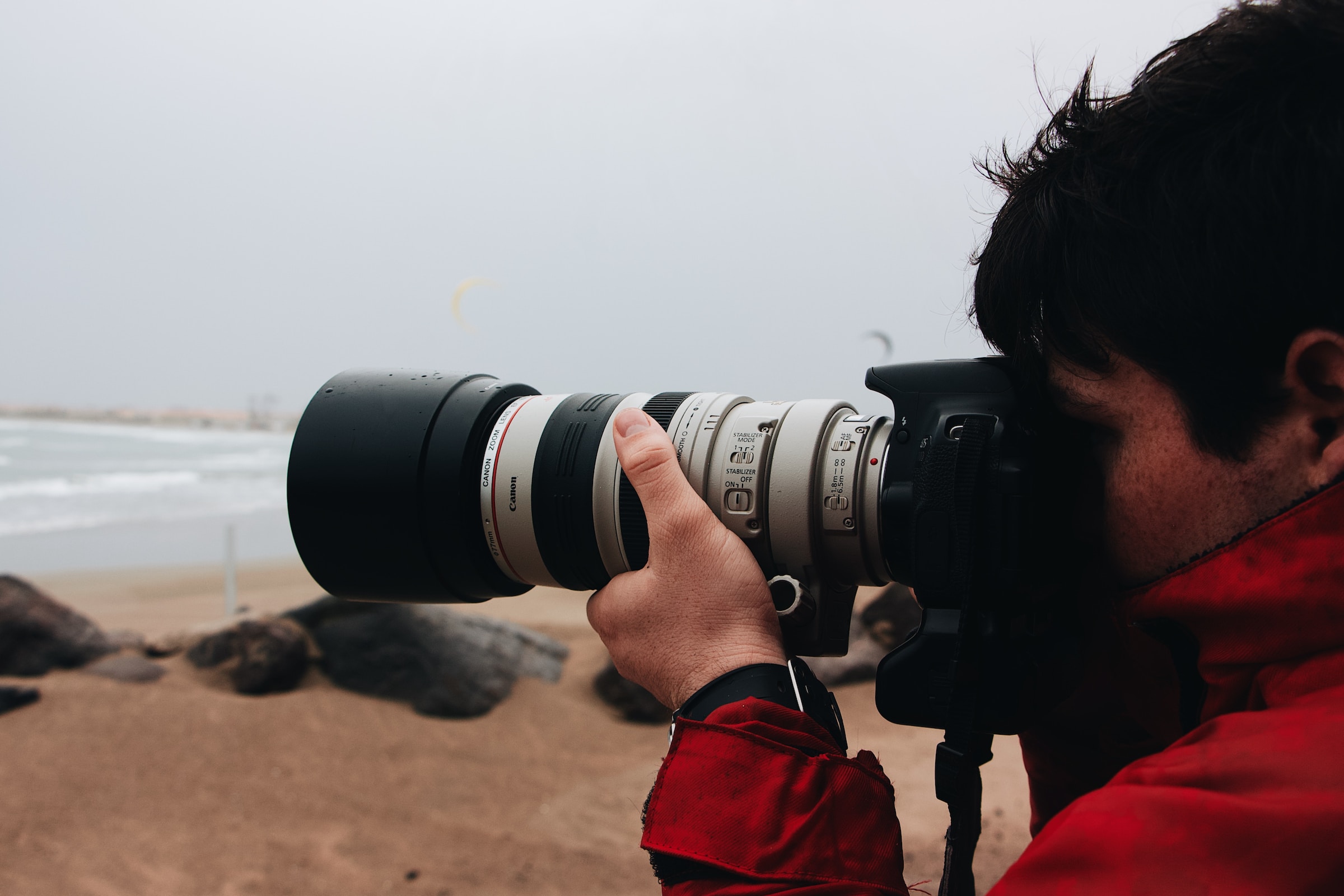
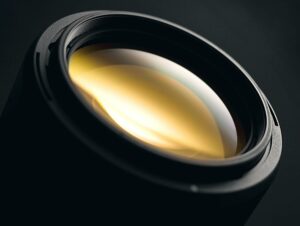
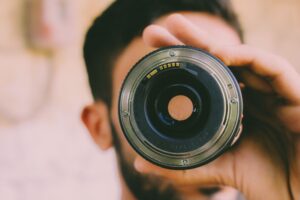
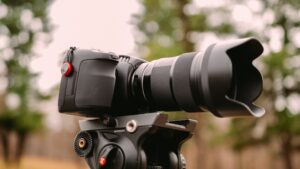
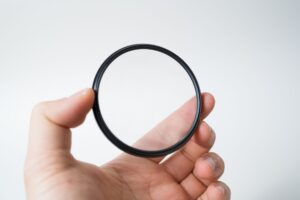
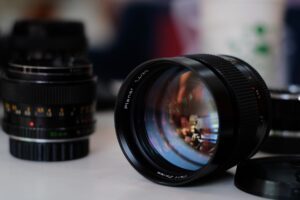
![Read more about the article Should I Buy Used Camera Lenses? Insights, Advice & Recommendations [2023]](https://photographyexplorer.com/wp-content/uploads/2023/08/Should-I-Buy-Used-Camera-Lenses-300x200.jpg)